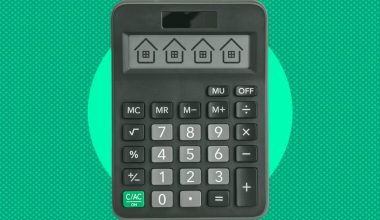Hey, do you know that refinancing your mortgage with a rate and term option gives you a lower interest rate and a flexible payment plan? You can either use the FHA government program rate and term option or check out the other refinance options available for seniors and younger citizens within the states. Whichever one you intend to use, you’ll surely get the result you seek with refinancing. However, you need to define your refinance needs and tailor them to meet your financial strengths. In general, refinancing is a great choice.
What is a Rate and Term Option Mortgage?
The simple definition of a rate and option is actually modifying a mortgage loan—for the better, of course. Generally, when you refinance, you’ll receive a new loan that’s either shorter or longer than your initial plan. With the new mortgage, you pay off your existing mortgage provider and then start making payments on the new mortgage plan. The rate and term refinance option can be with your initial mortgage provider. You can also decide to change to a new mortgage provider. It’s equivalent to upgrading your mortgage loan to a better term. Generally, it’s a great option that places you in a much better and healthier financial position. Refinancing changes the conditions of your current mortgage loan to better ones with a more favorable interest rate or term.
Mortgage Rate and Term Option: How Does it Work?
Someone who wants to refinance his home will approach his mortgage lender or another mortgage provider. The mortgage lender will check and assess your application to know whether you are eligible or not. The rate and term eligibility criteria include home equity, credit score, debt to income ratio, and credit score. If you are eligible, you’ll receive a new loan, use the new loan to pay off your previous loan, and then start to pay off your new loan.
Rate and Term option Eligibility
The following are the eligibility criteria that must be met before you qualify for the rate and term refinance mortgage option
#1. Home Equity
The portion of the loan principal that you have already paid off is your home equity. Refinancing should be put off until you have at least 20% equity in your house. It is possible to refinance with less equity, but the best interest rates won’t be available to you.
#2. Credit Score
The final eligibility criteria for rate and term mortgage options is your credit score. Your credit score will determine whether or not you’ll get the rate and term mortgage option. For instance, most private lenders demand a credit score of at least 620. If you are lucky enough to get an FHA loan, you can refinance with a credit score as low as 530. You can also look up the various options that allow you to refinance without a credit check.
#3. Debt-to-Income Ratio (DTI)
When refinancing a mortgage loan, the DTI is a crucial indicator for lenders. They evaluate this because it reveals your capacity to settle your debt by making regular payments. We recommend having a DTI of 50% or higher before applying.
#4. Closing Costs
When you refinance, closing expenses must be taken into consideration. Closing expenses for a refinance typically range from 2 to 5 percent of your mortgage’s principal. But if you can’t afford to pay the closing fees in full when refinancing, you can roll them into the refinanced loan.
What Are the Advantages of Rate and Term Options?
The following are some of the advantages of a rate and term option program (ratio).
- A new mortgage interest rate will result in a lower monthly payment.
- Increase your equity
- This allows you to switch your loan from an ARM to a fixed one.
Why Are Mortgage Rate and Term Options Necessary?
As was already said, whether you choose a rate and term choice for 1986 or 2021, this refinancing option gives you a wide range of advantages. Here are some of the best.
#1. Loan Term Adjustment
You can choose to refinance your mortgage to a shorter term with a rate and term refinance, such as from 20 years to 12 years or extend it from 15 to 25 years. Now, when you decide to extend or shorten your loan term, your interest is also affected.
#2. Lower Interest Rate
The interest rate on your mortgage loan has changed dramatically since you first took it out. Refinancing gives you an opportunity to pay off loans at a lower interest rate. Lower interest rates afford you the opportunity to save while paying off your loan.
#3. Reduces Monthly Payment
Refinancing comes with a longer-term plan. The longer the term, the smaller your monthly payment will be. This simply means that choosing the longer-term refinancing gives you more time to pay off the loan and lowers your monthly payment.
#4. Loan Type Flexibility
Loan type flexibility switches from an FHA mortgage to a conventional mortgage or from an adjustable-rate mortgage (ARM) to a fixed-rate mortgage.
Rate and Term Option Government Program
The rate and term option government program is otherwise known as the Federal Housing Administration (FHA) mortgage, FHA home loan, FHA guaranteed loan, or FHA insured loan. The FHA is a mortgage program that is insured by the government to promote the availability and purchase of affordable housing throughout the United States. The loan is not available for every kind of house. However, it protects lenders from large financial losses. FHA benefits include a downpayment of 3.5, acceptance of a low credit score, and a favorable refinance option that gives little room for foreclosure on your home.
How Does Government Program Help With Rate and Term Option?
The rate and term mortgage option government program help seniors and other borrowers by refinancing their loans in case they default on their mortgage.
Rate and Term Option Senior
If you are a senior citizen who wishes to refinance, you are not excluded from the various options available. Being retired can have a great toll on your finances, especially if you didn’t plan your retirement. With no active job, meeting your monthly payment can be demanding.
How to Get a Rate-and-Term Refinance as a Senior
If you decide that applying for a rate-and-term refinance is the best course of action for you, take the following actions:
#1. Check your Credit
Check your credit reports to determine where you stand and to look for errors that could lower your credit score before submitting an application for a rate-and-term refinance as a senior. Unit You already have an account with at least one of the top three credit bureaus in the United States. Simply check your credit score with any of them.
#2. Arrange Financial Documents
Lenders will not release their money without proof and evidence. So you need to gather your documents and get them ready. Since you’re a senior, retirement and pension statements must be part of your bank statements, social security income statements, and other relevant documents that will help prove your creditworthiness.
#3. Compare Prices
You can only compare prices by shopping around. You don’t have to refinance with your current lender. Prequalifying with as many lenders as possible can allow you to compare rates and terms.
#4. Apply for Refinancing
When you find a lender whose terms are flexible enough for your needs, submit a refinance application and wait for their feedback.
#5. Review and Sign Your Closing Documents
A lender will send you closing documents outlining the specifics of the loan, including the interest rate, term, and repayment plan if you are authorized. But please, carefully proofread every document before you sign it.
#6. Close Loan
Pay any closing costs that aren’t wrapped into the new loan and attend the closing meeting.
Are There Other Refinance Options for Seniors?
Yes, there are. Aside from rate and term, there is other refinance option for seniors. The following are some of these;
#1. Home Equity Line of Credit (HELOC)
Home equity line of credit (HELOC) may be a good option but it’s usually a trap if you’re not careful enough. It allows you to borrow up to 80% of your home equity or more over a 10-year period. It works like a credit card in that the lender provides you a line of credit that you can draw from whenever you need it during a draw period
#2. Fannie Mae RefiNow
Fannie Mae RefinNow is also another option for seniors or anyone who doesn’t want a rate and term. If you have a mortgage with Fannie Mae, then you may be eligible for it. But then you need to meet certain requirements, which include no record of default within the last 6 months, no more than 1 default payment in one year, and a credit score of 20 or more. It also allows a Debt to income ratio of 65%.
#3. VA Interest Rate Refinance Loan (IRRRL)
If you’re in the military and have a VA loan program running, you can easily refinance it to an interest rate refinance loan. Although you’ll have to pay VA funding fee, it’s a great option if your income or the value of your home decreases.
#4. Freddie Mac Enhanced Relief Refinance
With Freddie Mac’s Enhanced Relief Refinance, you can change your ARM to a fixed rate. And if you’re in luck, it’ll also result in a lower interest rate and a shorter term too.
#5. Cash-out refinance
Seniors who do not want to refinance their mortgage option with a rate and term can do that with a cash-out refinance. A cash-out refinance replaces your old loan with a new loan that’s, of course, higher than the existing loan. All you have to do is pay off your initial mortgage and collect the remaining balance in cash at closing. If you can cut the rate on your current mortgage as a result of applying for this mortgage type, it would be really beneficial.
#6. Home Equity Loan
With the home equity option, a lender will provide you with a lump sum of money to borrow if you meet their requirements. And then, you’ll have to pay back the money in monthly installments over a period of time. Home equity loans are usually fixed rates.
#7. Fannie Mae HomeReady Refinance
Seniors who do not want to use the rate and term option can refinance using Fannie Mae’s home ready refinance. It’s specifically for low-income earners and seniors, too. If your current loan is with Fannie Mae, then you may be in luck with a home-ready refinance option. The requirement is also fair, which means most people who apply are eligible.
What is mortgage Rato?
Lenders often look for your front-end and back-end ratios to be no more than 28 percent for the front end and no higher than 36 percent for the back end, which includes all monthly obligations.
What are the three different types of mortgages?
The three primary types of mortgages available for home purchases are fixed-rate, conventional, and standard adjustable rates. They all differ in their advantages and drawbacks, which helps a variety of homebuyer profiles.
Can you get a mortgage with 55% DTI?
When your debt-to-income (DTI) ratio is high, the FHA gives you greater leeway and normally allows you to go up to a 55% ratio (i.e., your debts as a percentage of your income can be as high as 55%).
What is a good credit score?
Although ranges vary based on the credit scoring methodology, generally speaking, credit scores between 580 and 669 are regarded as fair, 670 to 739 are considered good, 740 to 799 are considered very good, and 800 and higher are considered exceptional.
What are the 2 main types of mortgages?
Mortgages are offered with a choice of two interest rate structures: fixed and adjustable. With a fixed-rate loan, the interest rate is fixed throughout the duration of the loan. That implies that you commit to paying the current market interest rate for the next 15–30 years.
What type of mortgage is best for first-time buyers?
An FHA loan is simpler to qualify for than a conventional loan and requires a smaller down payment. FHA loans are great for first-time homeowners since you can put down as little as 3.5% of the purchase price in addition to paying reduced upfront loan expenses and having fewer credit requirements.
What’s a good deposit for a first-time buyer?
You’ll need to save a deposit equal to up to 5% or more of the buying price and borrow the remaining funds (the mortgage) from a lender like a bank or building society. Your home’s worth serves as the loan’s “security” until it is fully repaid.
Final Thoughts
Rate and term are great refinance options for youngsters and seniors. You’ll definitely find something that’ll suit your financial needs. All you have to do is simply check out the various refinance options available.
Rate and Term Option FAQs
Is it possible to get equity out of my home without refinancing?
Yes, you can. This can be achieved in two ways. The first is home equity, and the second is HELOCs. With either of these, homeowners can use their equity to borrow money from lenders.
Do cash-out refinance have higher interest rates?
Yes, it does. This is because it has a higher risk than the rate and term options.
How long after refinance do I get money?
About 3-4 days after closing.
- HOW TO PAY OFF MORTGAGE IN 5 YEARS: A Comprehensive Guide
- COST TO REFINANCE A MORTGAGE: All You Need to Know
- MORTGAGE CREDIT SCORE: Minimum Credit Required To Buy A Home
- Refinancing Home Loan: Rates, Costs, and All You Need
- How To Buy A House With Bad Credit: Detailed Guide In 2023
- Cash-out refinance loan explained (+ requirements and tools)(Opens in a new browser tab)






